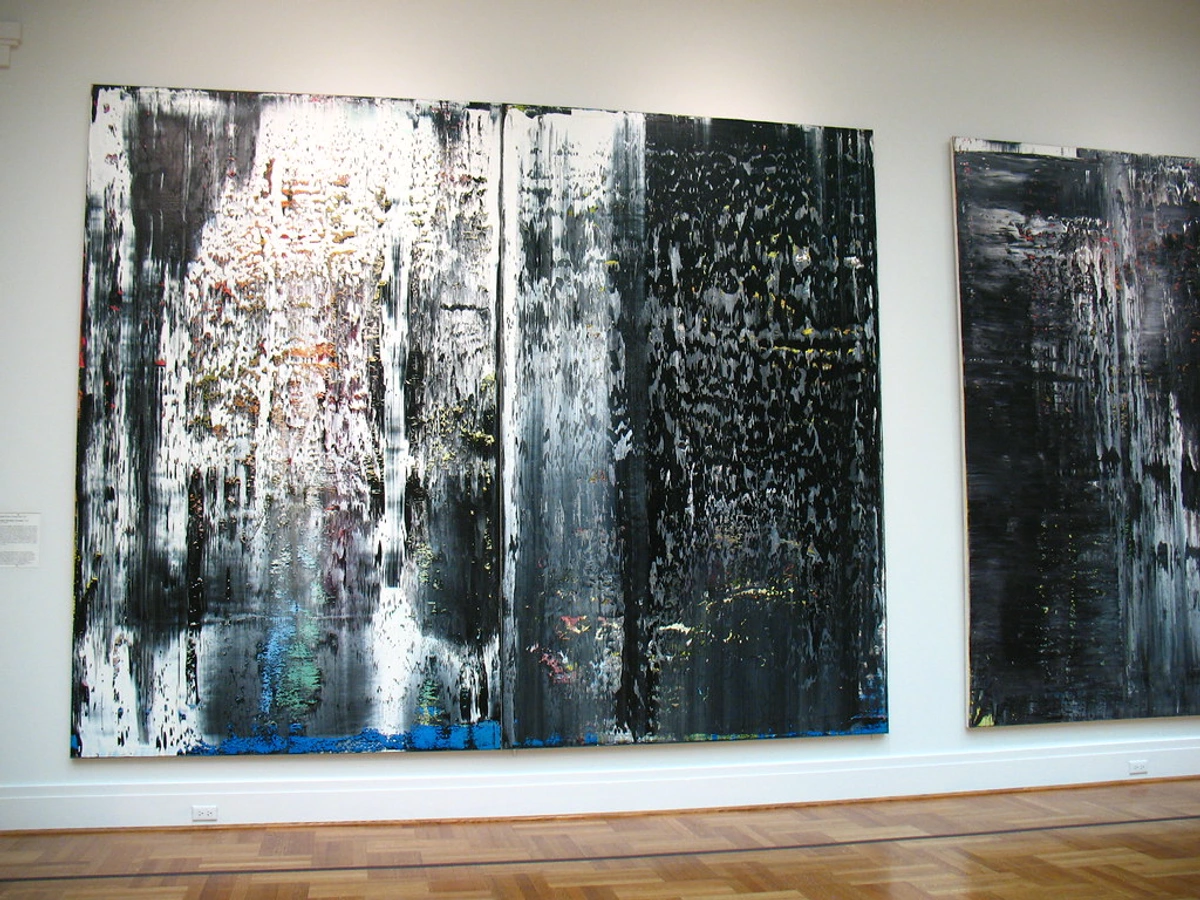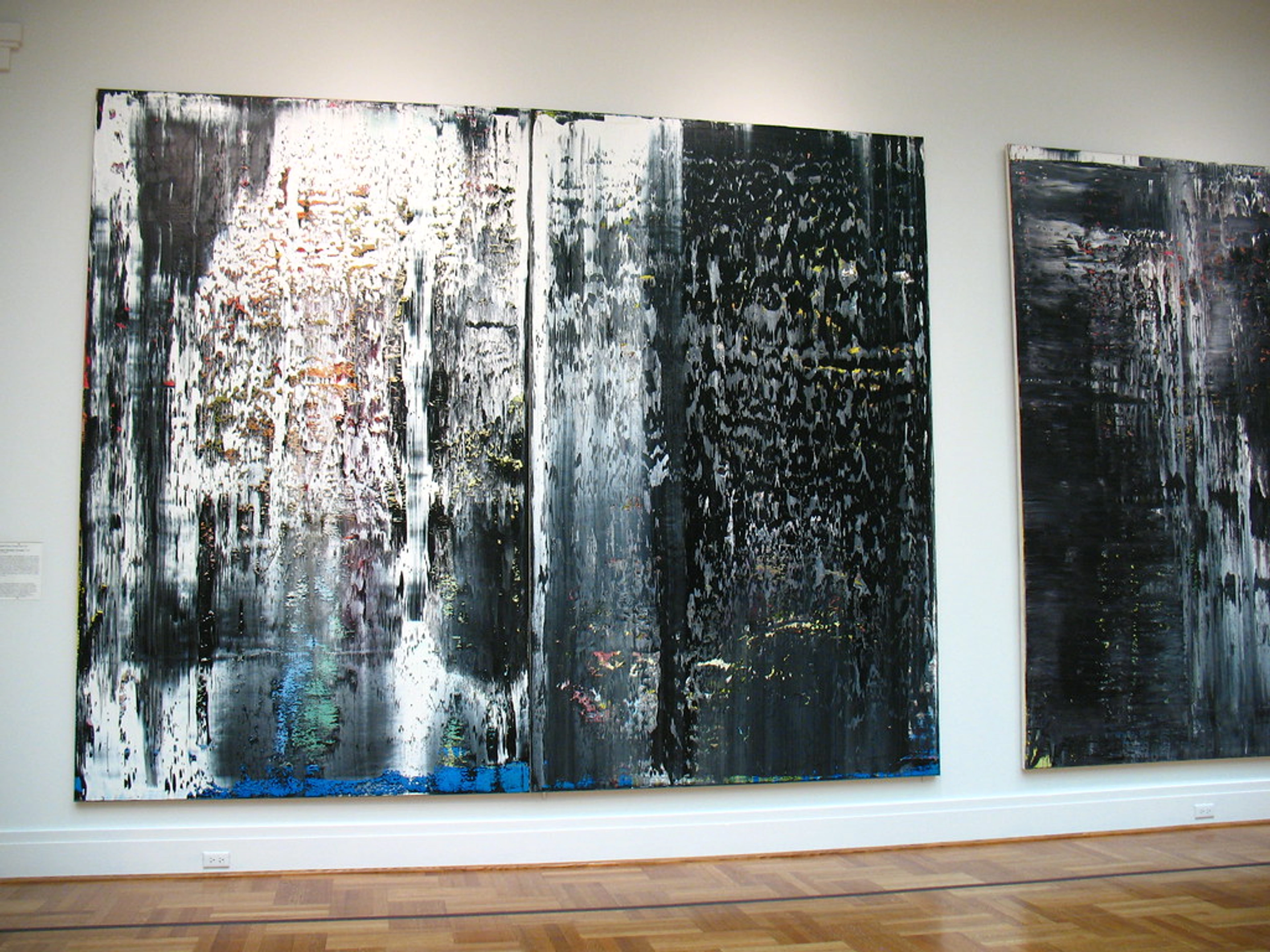
Abstract Art Preservation: An Artist's Candid Guide to Longevity & Care
An artist's personal journey into abstract art preservation, from environmental control and unique mixed media challenges to knowing when to call an 'art doctor'. Ensure your vibrant collection endures for generations.
Preserving Abstract Art: A Personal Guide to Longevity & Care from an Art Doctor
I’ve always considered myself pretty handy. If something needs fixing around the house, my first instinct is to Google a tutorial, grab a screwdriver, and perhaps, more often than I’d like to admit, make things slightly worse before they get better. My latest DIY triumph involved a bookshelf that now leans dramatically to the left – a testament to my enthusiasm, if not my precision. While this 'can-do' attitude works wonders for a wobbly chair or a leaky tap (eventually!), I’ve slowly, almost painfully, come to terms with the fact that my art, especially my abstract pieces, requires a very different touch. There are just some things you shouldn't DIY. Like open-heart surgery, or, as I recently discovered, art restoration. It’s a bit like taking your beloved, slightly quirky vintage car to a mechanic for a routine check-up – only your car is a canvas filled with your soul, and the mechanic is a highly specialized 'art doctor', an expert in diagnosing and healing artistic ailments, often before we even notice they’re there. And I've learned that recognizing when to call in a professional is, in itself, an art form.
To be honest, the thought of someone else handling my art, even with the best intentions, always made me a little nervous. It’s personal, isn’t it? Every brushstroke, every accidental drip – it's all part of the story. But as my collection grew, and as I started creating pieces that I truly wanted to endure, a nagging question began to surface: How do I ensure these vibrant expressions of emotion and color don't just fade into a dusty whisper over time? And what about the art my collectors buy from me – how can I guide them? This led me down a fascinating rabbit hole, culminating in a wonderfully insightful (and sometimes hilariously self-deprecating on my part) 'Q&A' session with a seasoned art restorer. Let’s just say, my notions of art care were thoroughly, yet gently, dismantled. I learned, for instance, that my previous attempts at dusting with a feather duster were probably doing more harm than good. Oops. But hey, we live and we learn, right? This article is less of a formal interview and more of a sharing of profound insights through my personal lens, because frankly, it felt like a deeply personal conversation about why we should even bother and how to do it. (Though, if you're looking for a more formal deep-dive, I did eventually publish a proper Q&A with an art conservator on this very topic!).

Why Bother? My Personal Brush with Impermanence and the Soul of Art
There's a certain romantic notion, isn't there, that art should just exist, live its life, and naturally decay? A kind of beautiful, slow surrender to time. I used to think that way, a little. After all, life is fleeting, why should art be any different? But then I considered the sheer intent behind creating something. The hours, the emotional energy, the very essence poured onto a canvas. To let that fade preventably seemed, well, a bit rude to my past self, and frankly, to the people who connect with my work. It felt like allowing a cherished conversation to simply drift into silence when it still had so much more to say. Preserving abstract art, for me, is an affirmation of its inherent value – not just as an object, but as a living record of emotion and thought.
As an abstract artist, my creative flow is often deeply intuitive, almost a primal urge. Each painting carries a piece of my abstract language, a story told in color and form that might only fully reveal itself years later. For instance, a cascade of cool blues and sharp reds might, for me, capture the beautiful chaos of a winter storm, a memory I hope transcends time. To preserve that is to preserve a moment in time, a fragment of thought, a legacy. It's not just about protecting an object; it's about protecting its soul, and the potential for future generations to engage with it – not just individually, but as a collective cultural memory. Our art tells stories across time, shaping our understanding of who we were and who we might become. For me, ensuring the longevity of my work is a vital, ongoing conversation between past, present, and future, a silent dialogue with countless unknown viewers.
Historically, the idea of art preservation has evolved dramatically. While early artists relied on practical methods passed down through guilds, the 19th and 20th centuries saw the emergence of modern conservation as a scientific discipline. This involved pioneers developing techniques for scientific analysis of materials, understanding chemical degradation processes, and establishing institutions like the International Council of Museums – Conservation Committee (ICOM-CC) and the Getty Conservation Institute. This shift emphasized long-term stability and minimal intervention, moving beyond mere "restoration" to comprehensive conservation. It’s a journey from simply cleaning a painting to understanding its very material makeup – a testament to our enduring desire to connect with creativity across centuries. It also highlights the growing field of conservation science, where researchers continually develop new analytical techniques and preservation methods to safeguard our artistic heritage. So, if art is this living, breathing entity, constantly evolving with time and interpretation, how do we best ensure its continued voice? This is where modern conservation truly shines, providing the bedrock of scientific understanding upon which Eleanor's practical advice is built.
Entering the Sanctuary: What I Learned from the "Art Doctor"
This realization, this pressing need to ensure the vibrancy of my artistic expressions didn’t just fade, eventually led me to Eleanor – my 'art doctor'. My conversation with her felt less like an interrogation and more like a guided tour through the secret life of art. She didn't just rattle off facts; she spoke with a reverence that made me see my paintings in a whole new light. Turns out, the biggest threats often come from the things we least suspect, or simply ignore.
The Silent Threats: Environment and Everyday Life
Eleanor started with the basics, and my eyes glazed over a little, thinking, 'Yeah, yeah, don't put it in direct sunlight.' But then she elaborated, and suddenly, the mundane became fascinating – almost as if the very air around us was conspiring against our cherished works.
- Light: The Sneaky Destroyer: It's not just direct sunlight. Any light, over time, can cause pigments to fade, especially organic ones. UV light is the biggest culprit, silently breaking down chemical bonds in the paint. She suggested thinking about how to choose the right lighting to enhance your abstract art collection not just for aesthetics, but for preservation. Filtering windows, using UV-protective glass for framed works, and opting for museum-quality LED lighting are all ways to minimize exposure. When we talk "museum-quality," we mean LEDs with a stable color spectrum, a high Color Rendering Index (CRI) for accurate color depiction, and most importantly, negligible UV output – protecting your art from its most insidious luminous enemy. And yes, sometimes it means rotating pieces or simply accepting that some parts of your home are just not ideal galleries. A harsh truth for an artist who loves seeing her work bathed in natural light!
- Temperature & Humidity: The Goldilocks Zone: Art, like me, prefers things just right. Too hot, too cold, too damp, too dry – each extreme or fluctuation can stress the materials. Canvases can expand and contract, paint can crack, and mold can become an uninvited guest. And who knew kitchen fumes or the invisible spray from that air freshener could slowly, imperceptibly, coat and damage a surface? Eleanor explained that these contain Volatile Organic Compounds (VOCs) – think formaldehyde from furniture, benzene from paints, toluene from cleaning supplies, but also chemicals from plastics, glues, aerosols, and even the off-gassing of certain types of wood in your home. These airborne culprits can adhere to surfaces, reacting with pigments or binders, causing discoloration, stickiness, or accelerating degradation over time. It makes you realize the quiet importance of good ventilation, especially in any space housing your art. I even started wondering about my own studio – all those paint fumes and solvents, what were they doing? It truly makes you rethink the art of display: how to light and position abstract art for maximum impact entirely, knowing how much silent damage can occur. Here’s a quick guide to ideal conditions for keeping your artwork happy:
Condition | Ideal Range |
|---|---|
| Temperature | 68-72°F (20-22°C) |
| Relative Humidity | 45-55% |
- Heat Sources: Hanging art near radiators, fireplaces, or even direct heat vents is another silent saboteur. The localized heat and dry air can rapidly cause materials to expand, contract, and become brittle, leading to irreversible cracking and warping, especially in wood panels or canvases. It’s a definite no-go for any cherished piece.
Beyond environmental factors, our own physical interaction with art also poses significant, often unnoticed, risks.
Hands Off! Or, How Not to Hug Your Abstract Masterpiece
This was where Eleanor gently, but firmly, disabused me of some bad habits. I remember once, proudly moving a new piece, carefully cradling it against my chest, only to notice a faint, almost invisible smudge later. My heart sank. It was then that I truly understood what Eleanor meant. I often feel this intense urge to be physically close to my work, to almost feel its essence, but I've learned to channel that impulse into respectful distance when it comes to physical contact.
- Handling with Care: Always, always handle art by its frame or stretcher bars, not the canvas itself. The oils and acids from our hands can degrade surfaces over time. Even a tiny fingerprint can become a permanent mark. It's like my mother always warned about freshly painted walls – touch them, and you'll leave a mark, only now, the canvas holds a piece of my soul, and the stakes feel infinitely higher! Wear gloves if you're feeling fancy, or just really, really careful.
- Cleaning (or Not Cleaning): This was the big one for me. My trusty feather duster? A definite no-go. It just moves dust around and can scratch delicate surfaces. Eleanor recommended a soft, clean, dry brush or a very gentle microfiber cloth for light dusting, but only if the surface is stable. For anything more, it’s a job for the pros. Seriously, check out cleaning different types of art for more specific guidance – but consider this your warning for abstract pieces.
Proper Framing & Glazing: The Unsung Heroes
For works on paper, or even smaller canvases, framing isn't just about aesthetics; it's a critical layer of defense. The frame itself, beyond its glazing and matting, plays a vital role. A well-constructed frame, typically of solid wood with robust joinery, provides structural stability and creates a secure micro-environment for the artwork, protecting it from external bumps and accidental touches.
- UV-Protective Glazing: Always opt for glass or acrylic with UV-filtering properties. This dramatically reduces the amount of damaging UV light reaching the artwork.
- Archival Materials: Ensure all materials touching the artwork – mats, backing boards – are acid-free and lignin-free. Standard cardboard can leach acids over time, staining and degrading the art.
- Spacers and Sealing: Use spacers to prevent the artwork from touching the glazing, allowing for air circulation and preventing mold buildup. A properly sealed frame also offers protection against dust, insects, and fluctuations in humidity.
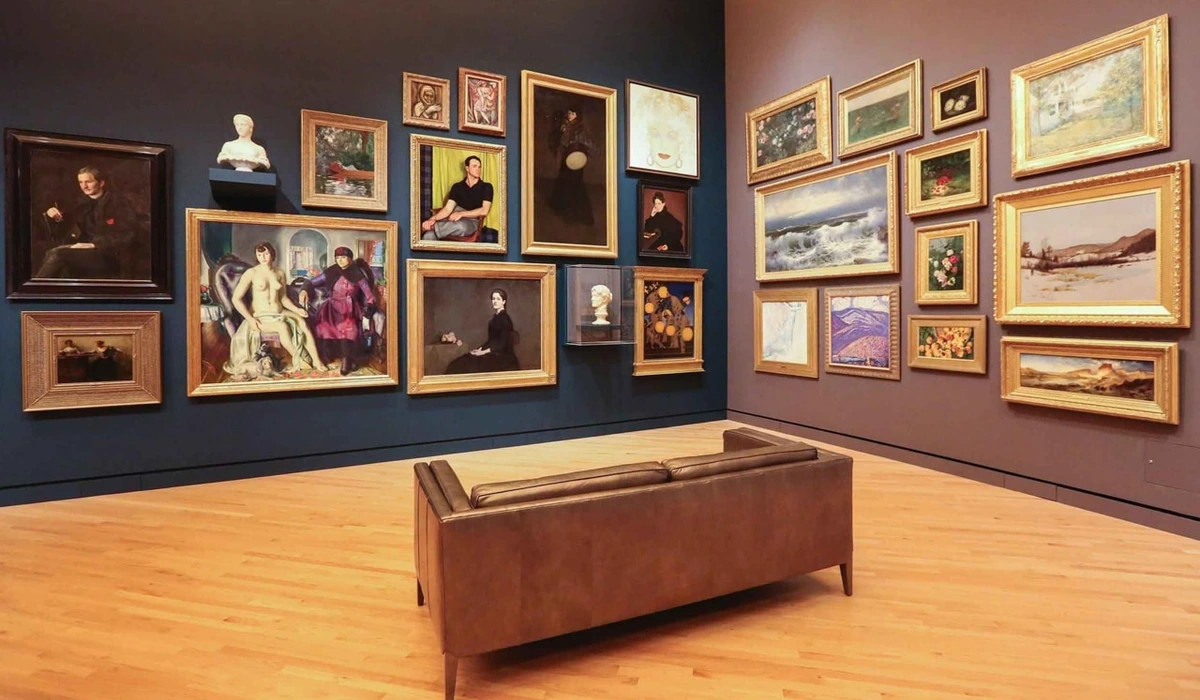
Abstract Art: Unique Challenges, Universal Solutions (and the Role of Conservation Science)
I asked Eleanor if abstract art, with its often varied textures, mixed media, and sometimes unconventional materials, posed particular challenges.
"Absolutely," she said, with a knowing smile. "Modern and contemporary art, especially abstract works, often push the boundaries of traditional materials. You might have acrylics, oils, collage elements, even found objects all on one canvas. Each material reacts differently to its environment and requires a specific approach for restoration." She elaborated that these pieces present conservators with a fascinating puzzle. The primary challenge lies in material incompatibility: imagine trying to make two very different people live happily ever after – it takes careful management. In art, this means different materials like oil paint and collage paper might expand and contract at different rates with temperature changes, leading to cracking or delamination. For instance, an artist might use an acrylic gesso layer, then oil paints, and finally attach a photographic print with an animal-glue-based adhesive. The oil paint, being flexible, may dry at a different rate than the more rigid acrylic, while the photographic print and glue respond differently to humidity. Over time, these varied rates of expansion and contraction, coupled with chemical interactions between the glue and the pigments, could lead to severe delamination and discoloration. My journey with mixed media suddenly felt a lot more complicated from a preservation standpoint, knowing the intricate dance of elements involved!
However, the core principles remain. Good environmental control, careful handling, and a proactive approach to maintenance are universally beneficial, regardless of style or medium. It's about understanding the unique material composition of each piece and respecting its inherent vulnerabilities.
The Allure and Risks of Unconventional Mixed Media
Some of my favorite abstract pieces incorporate everything from scraps of fabric to repurposed plastics, even bits of natural debris. This gives them such rich texture and narrative, but Eleanor pointed out the added layers of complexity for preservation. Textiles can be prone to insect damage, fading, and structural weakening; certain plastics can degrade, becoming brittle or sticky, and even off-gas harmful chemicals over time; while organic found objects (like dried leaves or wood) can attract pests or be highly sensitive to humidity. This is where active conservation – involving direct intervention to stabilize or repair – often becomes necessary, contrasting with passive conservation, which focuses on controlling the environment to prevent deterioration. The continuous innovation in conservation science is vital here, as researchers develop new, tailored cleaning agents, consolidation methods, and stabilization techniques specifically for these unique and challenging materials, ensuring even the most experimental abstract works can endure.
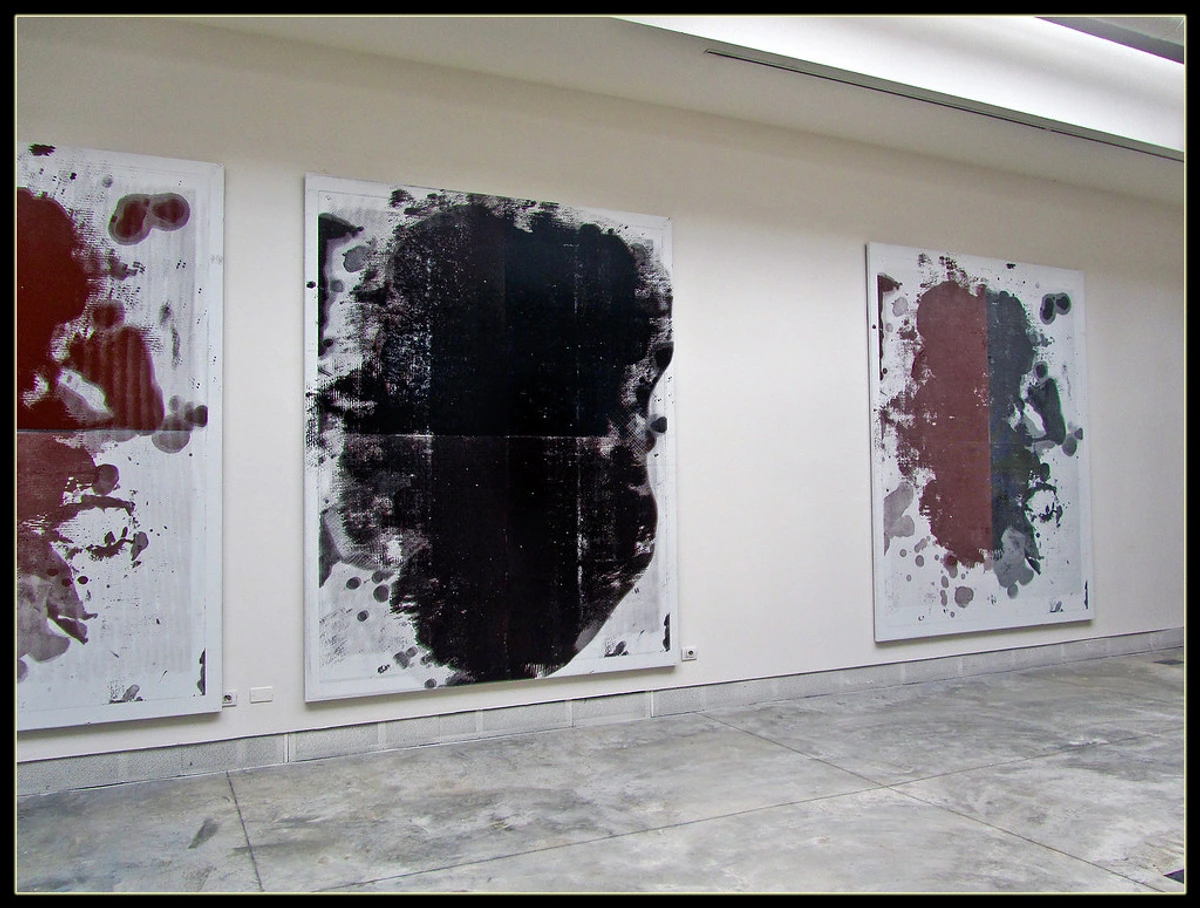
When to Call in the Pros (and when not to!)
This was the part where my inner DIY enthusiast had to be firmly, but kindly, suppressed. Eleanor's advice was clear: when in doubt, don't.
- Minor Scratches vs. Major Damage: The Line in the Sand. A tiny, non-adhered dust speck? Perhaps a very soft brush (with extreme gentleness!). But a tear, a significant paint chip, noticeable discoloration, or any sign of active deterioration – like lifting paint or new, rapidly appearing cracks? Stop right there. These are unequivocally jobs for a professional art restorer. Trying to fix it yourself, even with the purest intentions, isn't just a risk; it carries an ethical weight. You could cause irreversible damage, significantly increase the cost of future professional restoration, or even destroy the piece's historical integrity. It's like trying to perform intricate surgery on yourself because you watched a YouTube video – perhaps a tad overzealous, and certainly dangerous for the patient (your art).
- Craquelure: The Art of Aging (and When It's a Problem): Eleanor also educated me on craquelure – the fine network of cracks that can develop on the surface of paintings as paint ages and dries. Sometimes, this is a natural, stable process, part of the artwork's character – like the fine lines on an aged, beloved face. Benign craquelure often appears as a fine, uniform, and stable network of tiny lines that don't lift or flake. However, if cracks are deep, actively flaking, rapidly propagating, or if the paint within the cracks appears powdery or brittle, it can indicate a serious issue with the painting's structural integrity or environmental stress. Imagine a spiderweb of cracks forming overnight, with paint actually detaching – that's a red flag. Distinguishing between benign aging and damaging deterioration is another area where a professional's eye is invaluable, often looking for signs of delamination or active paint loss.
- Provenance & Documentation: Beyond physical preservation, the historical journey of an artwork, its provenance (record of ownership), is crucial for its value and authenticity. Think of it as a meticulously documented family tree for your art. For abstract art, where stylistic interpretation and attribution can sometimes be more nuanced than with traditional representational art, a clear, unbroken provenance becomes even more vital. It provides an undeniable chain of custody, linking the work directly back to the artist and authenticating its journey through time. A clear provenance, tracing a piece back to the artist and through known collections, not only enhances its market value but also assures its authenticity and contributes profoundly to its cultural and historical significance. Without it, a piece loses part of its story and, often, a significant portion of its desirability and intrinsic worth. While a conservator focuses on physical health, documenting an artwork's history, including any previous restorations, contributes to its overall legacy and cultural significance. (If you want to dive deeper into this fascinating topic, I've also written about understanding art provenance).
- The Cost Factor: Restoration isn't cheap, and rightly so. It requires specialized knowledge, tools, and immense patience. But Eleanor pointed out that preventative care – good display conditions, careful handling – is always far more cost-effective than reactive restoration. It's an investment in your art's longevity, much like understanding art insurance is an investment in its financial security.
The Proactive Path: Beyond the Basics
Moving beyond immediate threats, Eleanor emphasized a proactive approach – much like regular check-ups for our own health, or for that quirky vintage car of mine. It's about consistent observation and smart planning.
- Regular Inspections: Eleanor suggested a quick visual check every few months, and a more thorough, systematic inspection once or twice a year. Look for subtle changes: fading colors, new cracks (beyond stable craquelure), flaking paint, warping canvas, or unusual dust/grime buildup that won't easily come off. If you suspect anything, document it with photos and seek professional advice sooner rather than later.
- Condition Reports & Documentation: For valuable pieces, especially those you anticipate passing down or selling, a professional condition report is invaluable. This is a detailed record of the artwork's state at a specific time, documenting any existing damage, restorations, and the materials used. But even for personal collections, you can create your own 'medical history' for your art. Use a high-resolution camera to take clear, consistent photos from various angles. Keep detailed notes on environmental conditions, any minor incidents, or even just when you last gently dusted it. A digital archive of these details forms a crucial baseline, a way to track its journey through time, a bit like my own artistic evolution timeline documents my artistic evolution.
- Smart Storage Solutions: For long-term storage or pieces not on display, acid-free archival boxes or breathable dust covers (like unbleached cotton sheets) are excellent for protection from dust and environmental fluctuations. Never use plastic that can trap moisture, creating a suffocating microclimate ripe for mold, mildew, and chemical degradation. It's about giving your art a peaceful, protected slumber.
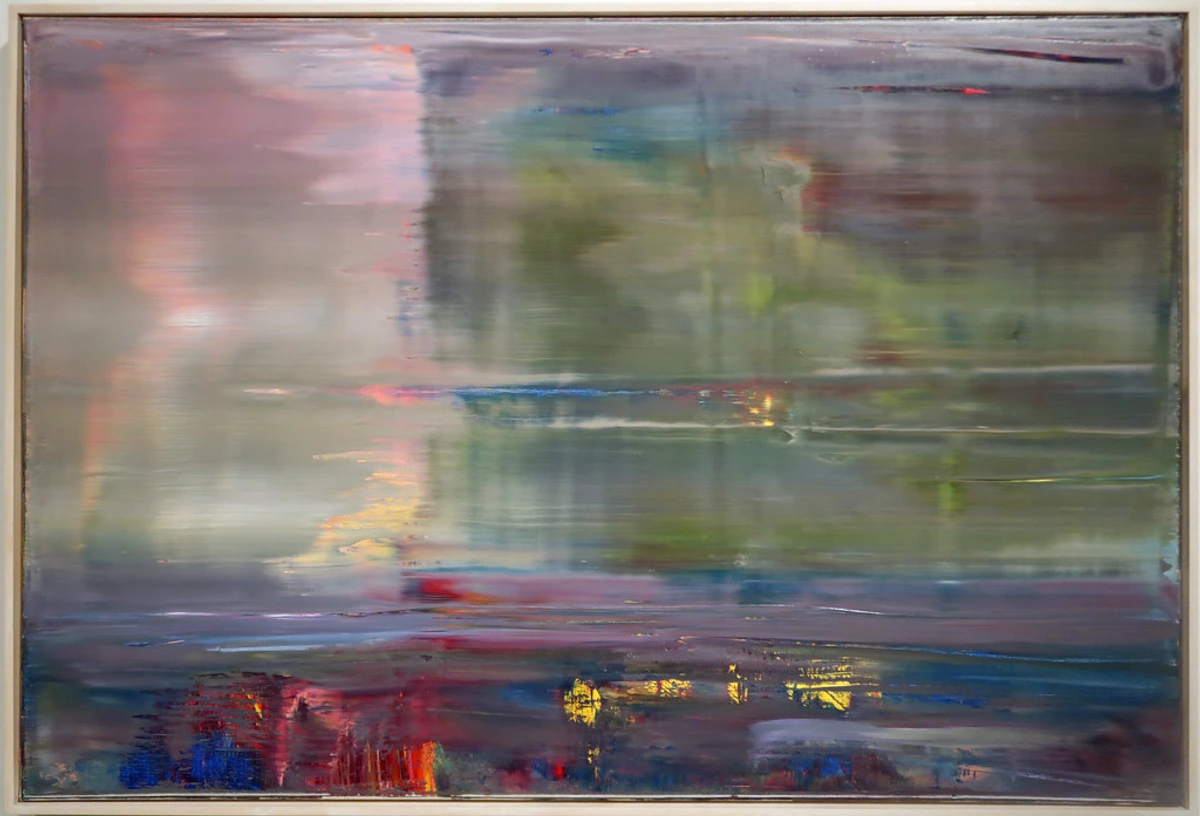
- A Note to My Collectors: When you acquire one of my abstract pieces, you're not just buying a painting; you're becoming a custodian of a story. Many of my works are created with robust, archival-quality materials, but each piece is unique. I often provide a small care guide specific to its materials and structure. If you ever have questions or concerns about its longevity, please don't hesitate to reach out directly; after all, we're sharing a legacy.
Your Burning Questions Answered
These are the questions that, let's be honest, probably keep many of us art collectors (and creators!) up at night. Eleanor's answers were invaluable.
Q: Can I clean my abstract painting with a damp cloth?
A: A resounding NO! Unless the artist specifically varnished it with a robust, washable surface (which is rare for many contemporary abstracts), water can damage paint layers, activate soluble pigments (pigments that dissolve in water), or cause blooming. Stick to dry, gentle methods, or better yet, consult a professional if a deeper clean is needed.
Q: Is it okay to touch the canvas edges when moving it?
A: While better than touching the painted surface, it's still best to hold the stretcher bars or frame. Edges can accumulate dirt or be more fragile than you think, especially if the canvas isn't tightly stretched.
Q: Can I hang my abstract painting in a bathroom?
A: Generally, no. Bathrooms experience significant, rapid fluctuations in temperature and humidity, along with high moisture levels. This environment is highly detrimental to most artwork, increasing the risk of mold, mildew, warping, and paint degradation. It's a high-risk zone best avoided for any valuable art.
Q: What's the best way to store unframed abstract works?
A: For unframed pieces, especially works on paper or unmounted canvas, store them flat in acid-free archival boxes, interleaved with acid-free tissue or Mylar sheets. If rolling is absolutely necessary for larger pieces, roll them paint-side out (to prevent cracking the paint surface) around a large-diameter, acid-free archival tube, again interleaved, and store horizontally. Avoid tight rolling and never store vertically on an end.
Q: Can certain framing materials harm my artwork?
A: Absolutely. Beyond ensuring UV-protective glazing and acid-free mats, be mindful of the frame itself. Cheaper wood frames, for instance, can off-gas harmful acids and lignins over time, which can migrate into the artwork and cause discoloration or degradation. Adhesives used in framing can also pose a threat. Always opt for archival-quality, conservation-grade framing materials from reputable sources to create a truly safe enclosure for your art.
The Unseen Thread: Connecting Art, Time, and Us
As I reflect on my conversation with Eleanor, I realize that preserving art isn't just a chore; it's an act of love. It's acknowledging the artist's dedication, the piece's journey, and its potential to inspire and connect with countless others over time. My own art is an extension of myself, and the thought of it being cared for, its story continuing to unfold for decades or even centuries, is incredibly humbling. It's a way to ensure the vibrant expressions I pour onto canvas can continue to speak volumes, perhaps even finding a home one day in a public collection, maybe even in my museum in Den Bosch.
So, whether you're a seasoned collector with a burgeoning private gallery, or just starting your journey with abstract art and curious about its future, remember: proactive steps now ensure that these vibrant expressions can continue to speak volumes for generations to come. It’s a small, consistent effort that yields a profound, lasting reward. And while I’ll still occasionally eye my feather duster with suspicion, I now approach the care of art with a newfound respect and understanding, thanks to the quiet wisdom of art doctors like Eleanor. If you're looking for art that's ready to start its own long and vibrant legacy, you can always explore my latest creations.
So, what small step will you take today to protect the art that speaks to your soul?
